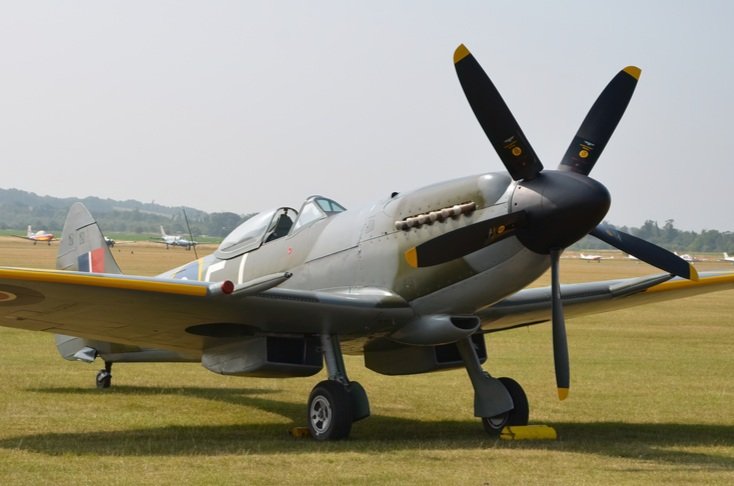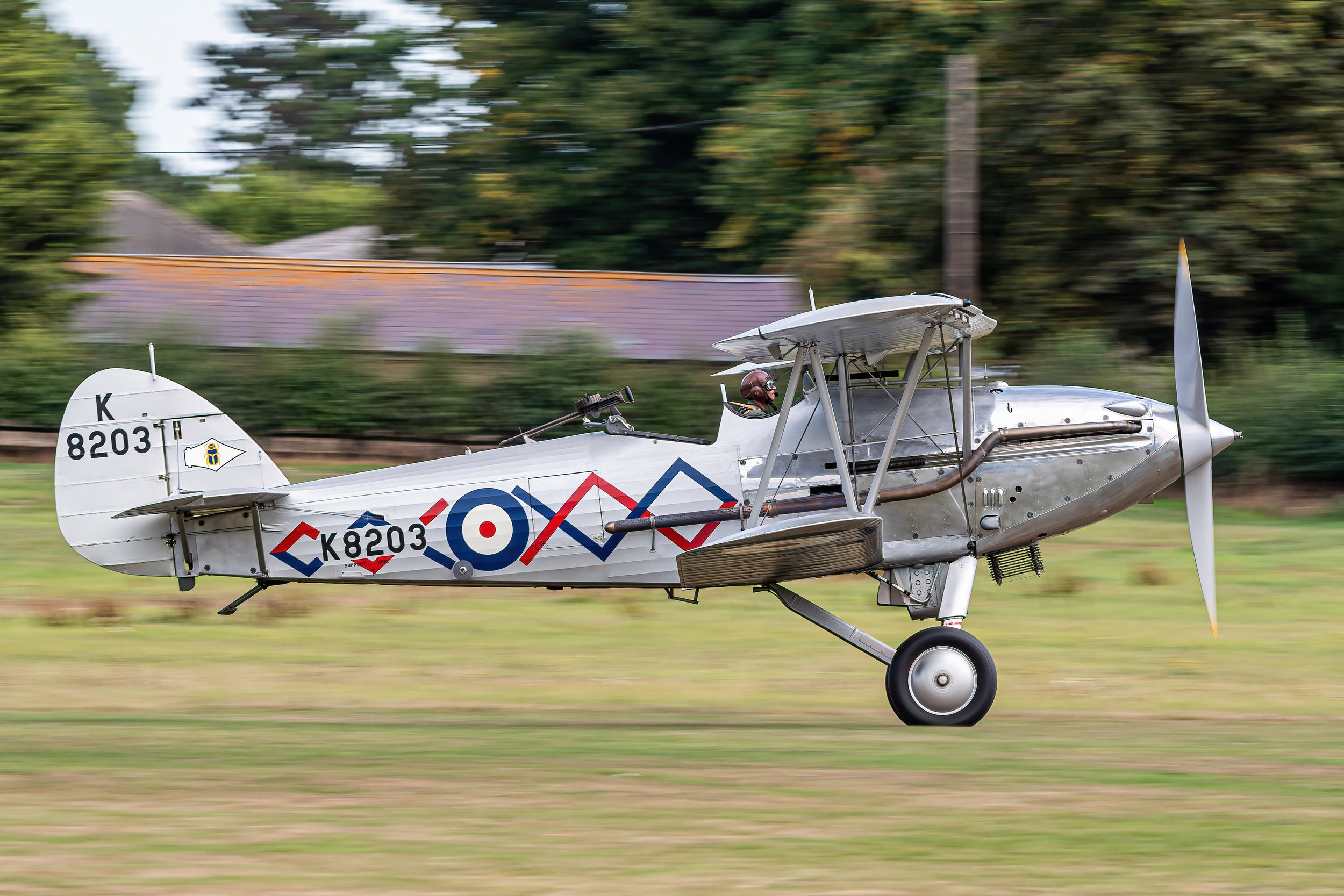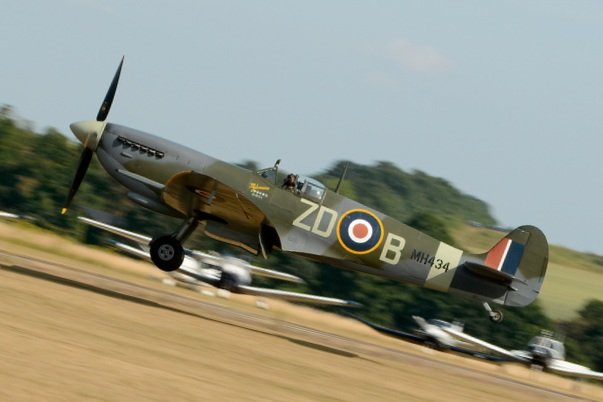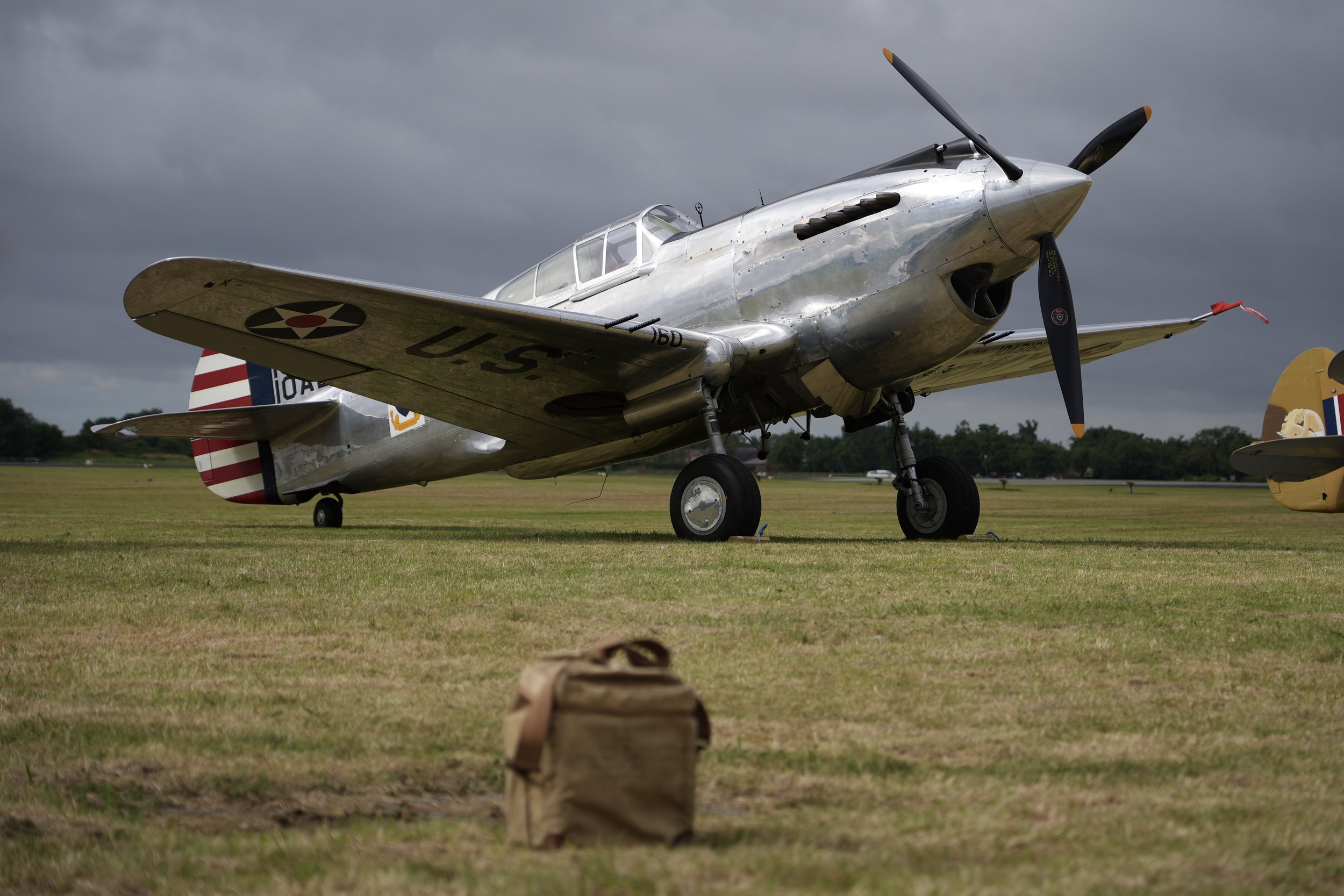DC-3 N473DC
Year built
1942
Aircraft
C-47A-75-DL
Base
East Kirkby Airfield
This Exact Dakota left the Douglas production plant at Long Beach, California in 1942 as a C-47A-75-DL and was delivered to the United States Army Air Force on 28 December 1943 and had serial 42-100882 assigned. She joined operations with 87th Troop Carrier Squadron based at Greenham Common in England equipped as glider pick up, her crew named her Drag ’em Oot (slang for ‘Drag Them Out’).
She participated in the air assault during D-Day when at 00:46 on 06 June 1944 she dropped 18 paratroopers of the US 82nd Airborne Division just behind the Normandy beachheads, near St. Mere Église. She returned safely to the UK and after a second mission that very same day, she started to resupply the troops in France.
In September 1944 she was transferred to the RAF, designated a Dakota C.3 and assigned the British serial TS422. Once with the RAF, she was assigned to Number 1 Heavy Glider Servicing Unit, attached to 38 Group RAF at Netheravon, Wiltshire. The RAF wanted to have a specialist glider recovery unit and TS422 started recovering Horsa assault gliders from the Normandy beachheads as soon as she joined the RAF. The unit recovered about 40 Horsa’s prior to Operation Market Garden. TS422 herself was just like the Horsa’s she recovered from the Normandy beaches, in action during the biggest para dropping in history: Operation Market Garden in September 1944. During this mission the pilot must have been severely wounded considering this Dakota was found to have signs of 12 bullet holes on the top of her cockpit and nose; probably caused by being attacked by a German fighter at some point but this Dakota warbird could take a beating. She was repaired and in August 1945 she joined 435 Squadron of the Royal Canadian Air Force which had just returned from Burma to the UK. After the war ended the Dakota left for Canada, where she served with the RCAF as a trainer, a transport and whilst equipped with skis and jato rockets, as a search and rescue aircraft.
After her fruitful military career, she ended up in the USA, serving with various civilian companies, being registered as N5831B. She was then grounded for a few years until Paddy Green found her in Arizona upon his search for a C-47 to be restored as a WW2 veteran.
Following an inspection (plenty of DC-3 / C-47 hulks around but most are in deplorable shape when inspected thoroughly) she was purchased and prepared to a condition suitable for the long ferry flight back to England. The flight to Liverpool took 7 days and 35 hours flying time but occurred without any technical problems.
Once in the UK she was registered N473DC and repainted in the livery she now appears in: the original markings as worn during her missions on D-Day 1944 with USAAF serial 42-100882 and coded 3X-P, nicknamed Drag ’em Oot (slang for ‘drag them out’) then piloted by Bill Allin.
| Back to Top |
Douglas DC-3
The Douglas DC-3 was a revolutionary propeller-driven airliner that significantly impacted the airline industry during the 1930s and 1940s, as well as during World War II. It was developed by the Douglas Aircraft Company as an improved version of the Douglas DC-2, with a larger and more comfortable 14-bed sleeper, which helped to set a new standard in air travel.
The aircraft is a low-wing metal monoplane with conventional landing gear, powered by two radial piston engines that produce 1,000-1,200 hp (750-890 kW). Although most DC-3s that are still flying today use Pratt & Whitney R-1830 Twin Wasp engines, many of the planes originally built for civil service were equipped with the Wright R-1820 Cyclone engine. This engine was less powerful than the Twin Wasp, but it was more economical and reliable.
The DC-3 was a notable improvement in many ways compared to previous aircraft. It was faster, more reliable, and had a longer range, providing passengers with greater comfort. Prior to the war, it pioneered many air travel routes and was capable of crossing the continental US from New York to Los Angeles in just 18 hours with only three stops. Additionally, it was one of the first airliners to efficiently carry only passengers without relying on mail subsidies.
During the war, the DC-3 played a vital role as a military transport aircraft. It was used extensively by the United States Army Air Forces (USAAF) and the Royal Air Force (RAF) for a wide range of missions, including paratroop drops, aerial resupply, and medical evacuation. Military versions of the DC-3, including the C-47 Skytrain (known as the Dakota in British RAF service), as well as Soviet- and Japanese-built versions, brought total production to over 16,000.
Following the war, the market was flooded with surplus transport aircraft, and the DC-3 was no longer competitive due to its size and speed. It was replaced on main routes by more advanced types, such as the Douglas DC-4 and Lockheed Constellation, but the design proved to be adaptable and useful on less glamorous routes. Many DC-3s were converted into cargo planes, and some were modified for use as executive transports and aerial survey platforms.
Civil DC-3 production was discontinued in 1942, with a total of 607 aircraft produced. However, the DC-3 continued to serve in a variety of roles in many countries around the world. Even today, many DC-3s continue to fly in a variety of niche roles, with an estimated 2,000 still in operation in 2013 and over 300 still in service as of 2017. The aircraft's durability, versatility, and reliability make it a popular choice for operators who require a dependable workhorse that can operate from short runways in remote locations.
| Back to Top |



| Back to Top |

































